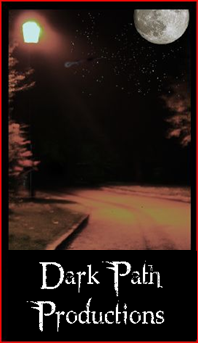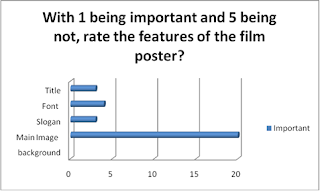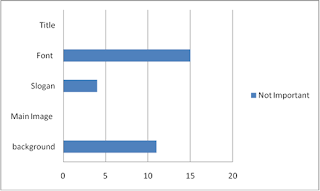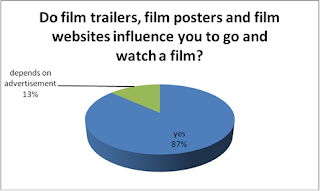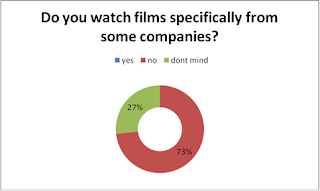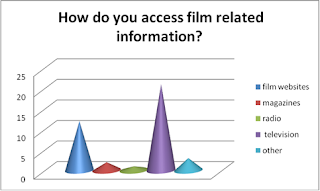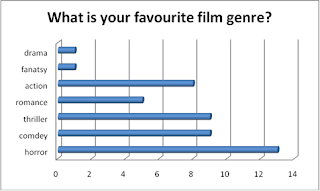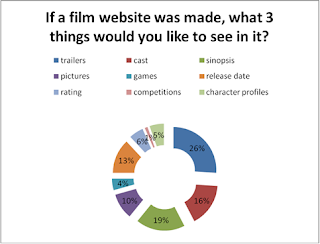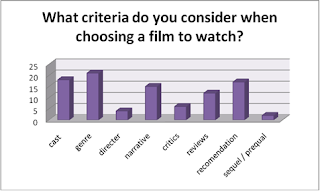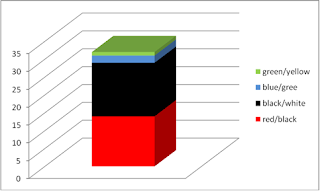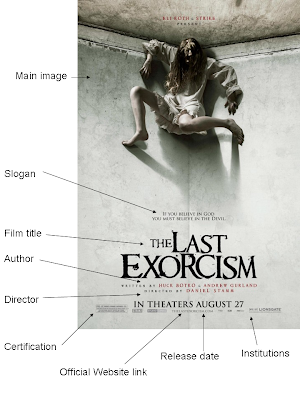
The main image that takes the entire page is lit up using high key lighting, and is of a girl/ young woman positioned at the top corner of a room. The girl hides her face with her long dark scuffled hair. Through mise en scene we can figure that she is working class, because of her selected costume, hair and makeup. The white colour scheme is not bright and pure, instead it has damp and dark patches, which relates to the narrative, where an innocent person is infected, and suggests something so pure and innocent can be corrupted into something it is not at first perceived to be.
Slogan-
"If you believe in god, you must believe in the devil."This slogan is positioned in the middle of the frame, mainly to grab the attention of the audience. The slogan itself brings up a worrying subject; the Devil. A villain figure to all Christians, a supernatural entity that is the personification of evil and the enemy of God and humankind. Saying that you must believe in the devil brings controversy, as some people worship him. suggesting Christian believe in the devil is controversial, however suggesting Christians believe in the Devil's existent is understandable, as the devil otherwise known as Satan an appears in the bible as Jesus' enemy.
Film Title- 'The Last Exorcism'-
An exorcism is the procedure of extracting a demon/ dark religious entity from a human or object. The title is a slight give away of the plot, but very few people know the true definition.
Positioned in the middle of the page the title communicates directly to the target audience, along with the largest font size that appears on the poster. The fonts colour is black, which suggests evil, power and death. This use of colour portays the films genre as a Horror.
Author and Director-
Many people look out for the director's and other people who have an important part in the film. The target audience can judge a film from this, and relate the quality of the film from previous productions of the important people behind the creation. Directors such as Steven Spielberg, James Cameron, Tim Burton etc are well known for their outstanding contributions for composing films into a Blockbuster success.
Certification-
Placed in small size at the bottom left hand corner this is not a legal requirement to include in a teaser trailer, however showing its certification easily promotes the film to the correct target audience.
Official Website link-
This link allows the target to find more information on the official website, where information placed there is used to entice the target audience to a further level. With the Internet becoming a day to day application the target audience can have no trouble accessing this information.
Release Date-
In large capital font the Release date is published on the poster to inform the target audience when to view the film at the cinema. By publishing it here the poster would serve it's purpose; to present the product as an advert and inform when to view it. Capital font emphasizes the text and is known as a conventional presentation device.
Institutions-
The institutions behind the production take credit for the production, and act similar to the director names appearing on the front cover and poster. The production companies are recognised by many film viewers, and having one or more major production company produce a film is approved by some of the target audience, who judge a film from the institutions. On the poster we have the well known institution 'Lionsgate' and 'Studio Canal'.
